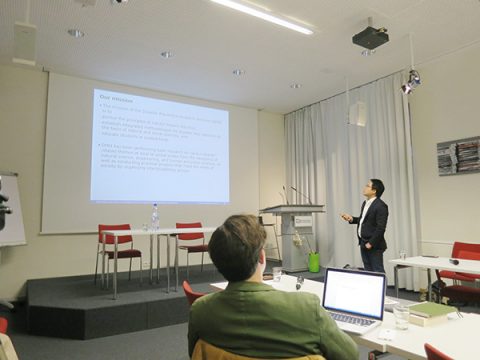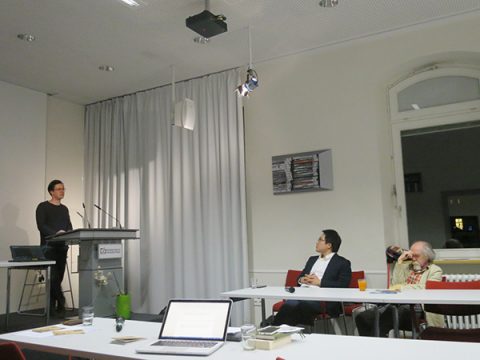On March 20th the 8th Nichi-Doku Joint Lecture titled „Advancement of vernacular constructions against natural disasters“ was held at Heidelberg University. In this lecture Associate Professor Kazuyoshi Nishijima of the Disaster Prevention Research Institute of Kyoto University (DPRI-KU) reported on research conducted as part of the JICA Grass-Root Project “Advancement of Vernacular Construction in Tanna” in the wake of cyclone Pam that devastated the Republic of Vanuatu in 2015.
While investigating traditional construction methods in cooperation with local specialists and measuring the persistence of vernacular structures in the laboratory, he searched for the most suitable building method by examining the actual reconstruction process on Tanna Island. Dr. Nishijima pointed out, that knowledge of indigenous, traditional architecture is in danger since building with concrete and other “modern” materials is getting more and more common in Vanuatu and other places worldwide that are repeatedly stricken by natural disasters. However, not only from this point of view the preservation of these traditions is necessary. After disasters “modern” insufficiently constructed buildings made of concrete and steel have to be abandoned because of the inability to dispose ruined structures and missing materials. In addition, he found out that vernacular building methods are in some cases even stronger and saver than modern constructions and better adapted to the climate. Therefor Dr. Nishijima argued for the revaluation of vernacular architecture is vital because of its usage of regenerating and locally available resources and the ability of the population to provide itself with easy to maintain and easy to build save housing. Dr. Nishijima concluded with a pledge to the support of these kind of reconstruction projects.
The commentary was provided by Dr. Lukas Ley (Institute for Anthropology, Heidelberg University), who did field research in Indonesia on reconstruction of cities after a flooding phenomenon called “rob” and how it is managed by the government and NGOs. He tried to raise an awareness of the possible influences on cultures that reconstruction projects from abroad might have and cautioned that rebuilding houses is only a small contribution to the relief of a population after disasters. With both viewpoints in mind, the audience discussed about the influence of climate change not only as a problem of physics, but as also an endangerment of culture.
 |
 |
| Dr. Nishijima lecturing | Commentator Dr. Lukas Ley |
The program and the profiles of the lecturer and commentator can be found here.


